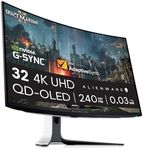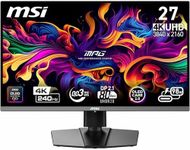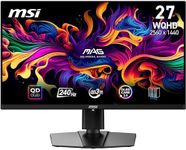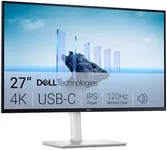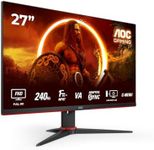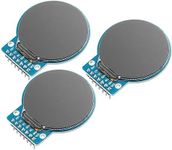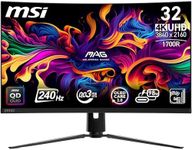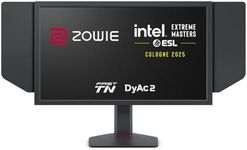Buying Guide for the Best Gaming Monitors
Choosing the right gaming monitor can significantly enhance your gaming experience. A good monitor will provide you with clear visuals, fast response times, and immersive gameplay. When selecting a gaming monitor, consider the type of games you play, your gaming setup, and your personal preferences. It's important to balance the technical specifications with your needs to ensure you get the best performance and enjoyment from your gaming sessions.ResolutionResolution refers to the number of pixels on the screen, which affects the clarity and detail of the image. Higher resolutions, like 4K, offer more detail and are ideal for visually rich games, but require a powerful graphics card. Full HD (1080p) is a common choice for gamers who want a balance between performance and visual quality. If you play fast-paced games, a lower resolution might be preferable to ensure smoother gameplay. Consider your graphics card's capability and the type of games you play when choosing the resolution.
Refresh RateRefresh rate is the number of times the monitor updates with new information per second, measured in Hertz (Hz). A higher refresh rate, such as 144Hz or 240Hz, provides smoother motion and is beneficial for fast-paced games like first-person shooters. If you play competitive games, a higher refresh rate can give you an edge. For casual gaming, a standard 60Hz refresh rate might be sufficient. Choose a refresh rate that matches your gaming style and the capabilities of your graphics card.
Response TimeResponse time is the speed at which a pixel can change from one color to another, measured in milliseconds (ms). Lower response times, such as 1ms or 2ms, reduce motion blur and ghosting, which is crucial for fast-paced games. If you play action-packed games, aim for a monitor with a low response time to ensure clear and crisp visuals. For slower-paced games, a slightly higher response time might be acceptable. Consider your gaming preferences when evaluating response time.
Panel TypePanel type affects the color accuracy, viewing angles, and response times of a monitor. TN panels offer fast response times and are often cheaper, but have poorer color reproduction and viewing angles. IPS panels provide better color accuracy and wider viewing angles, making them ideal for visually rich games, but they may have slower response times. VA panels offer good contrast and color depth but can have slower response times. Choose a panel type based on your priorities, whether it's speed, color accuracy, or viewing angles.
Adaptive Sync TechnologyAdaptive Sync technologies like G-Sync and FreeSync help eliminate screen tearing and stuttering by synchronizing the monitor's refresh rate with the graphics card's output. This is particularly important for maintaining smooth visuals in fast-paced games. If you have a compatible graphics card, choosing a monitor with the corresponding Adaptive Sync technology can enhance your gaming experience. Consider your graphics card and the games you play to decide if this feature is necessary for you.
Size and Aspect RatioThe size and aspect ratio of a monitor can affect your gaming experience and comfort. Larger monitors provide more immersive gameplay, but require more space and can be more expensive. Common sizes range from 24 to 32 inches. Aspect ratio, such as 16:9 or 21:9, determines the width and height of the screen. Wider aspect ratios can offer a more cinematic experience, especially for open-world games. Consider your desk space, viewing distance, and the type of games you play when choosing the size and aspect ratio.
